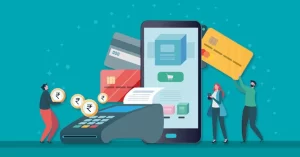India is quickly becoming a cashless economy. Over the past few years, a number of efforts and events have propelled this transformation. A strong digital infrastructure, widespread internet and mobile device penetration, ease of use and convenience, and a range of digital payment choices are some of the elements that have facilitated the transition.
With an increase in the number of digital transactions in India, it is imperative that all online businesses participate in this cashless environment. Offering a range of digital payment choices to your customers should be your primary focus as a business in order to facilitate simple digital payments.
What are digital payments?
Digital payments are made via digital techniques as opposed to a cash transfer. In our increasingly cashless society, digital payments are the new norm, and they take place every day all around the world. The term essentially describes any payment made via digital technologies. Even though it can seem easy enough for the user, there’s a lot of work going on behind the scenes. This is due to the fact that internet money transfers require security.
Digital payments are perfect for applications like online shopping since they can be made in real-time even with security encryption running in the background.
Digital Payments in India
In India, there are numerous digital payment options. While certain payment methods have been around for a while, others are still in their infancy and have only lately become more and more popular.
The various online payment options available in India are:
- Bank Cards
- Unified Payments Interface (UPI)
- Unstructured Supplementary Service Data (USSD)
- Aadhaar Enabled Payment System (AEPS)
- Mobile wallets
- Internet Banking
- POS Terminals
- Bank Prepaid Card
- Micro ATM
Advantages of Digital Payments:
For Businesses:
- Cost Savings: Lower expenses for handling, storing, and transporting actual currency. Reduced processing costs when using digital payments as opposed to more conventional ones.
- Efficiency: Quicker transaction processing, shorter checkout times, and enhanced client satisfaction. streamlined record-keeping and accounting, improving the effectiveness of financial management.
- Increased Sales: Enable internet sales, including in international markets, to increase your consumer base. Simple payment methods promote impulsive purchases and recurring business.
- Security: Decreased chance of fraud and stolen money. Payment fraud is less likely when enhanced security measures, such as encryption, are in place.
- Data Insights: Availability of priceless consumer data for analytics and tailored advertising. Aids in comprehending the interests and behaviour of customers.
- Cash Flow Management: Quicker financial access and better cash flow control. Simpler payment reconciliation, which lowers accounting errors.
- Digital Invoicing: Reduced administrative overhead through streamlining payment tracking and invoicing. Automatic alerts when payments are past due.
For Customers:
- Convenience: Simple and rapid transactions that may be done from any location with internet access. Access to a range of payment methods, such as UPI and mobile wallets.
- Transparency: It is easier to keep track of spending when you have access to a comprehensive transaction history. Clear documentation of purchases is provided by receipts and email confirmations.
- Rewards and Discounts: The ability to use loyalty programs, discounts, and cashback offers when making certain digital payment transactions. Earning reward points in order to receive rewards later on.
- Accessibility: Granting underprivileged groups access to financial services through mobile devices makes it possible for those living in remote places to engage in the digital economy.

- Reduced Contact: By minimizing the necessity for physical contact during transactions, contactless payments improve cleanliness and public health. Ideal during periods of health emergencies, such as the COVID-19 epidemic.
- Global Access: The capability to conduct international transactions and payments, streamlining cross-border transactions and remittances.
Conclusion
In India, the practice of accepting online payments has developed dramatically, changing how companies run. Online credit card transactions were the first to facilitate the expansion of e-commerce. Peer-to-peer and merchant payments made via cell phones were made easier with the advent of mobile wallets and Unified Payments Interface (UPI) platforms. Decentralized, international transactions were introduced by cryptocurrencies such as Bitcoin. Speed and convenience were enhanced with Near Field Communication (NFC) technology and contactless payments. In order to improve consumer experiences and lessen reliance on cash, businesses increasingly provide a variety of digital payment methods, such as subscription-based models, in-app payments, and QR code scanning. These advancements have changed financial transactions across industries, increased financial inclusion, and enhanced security.






